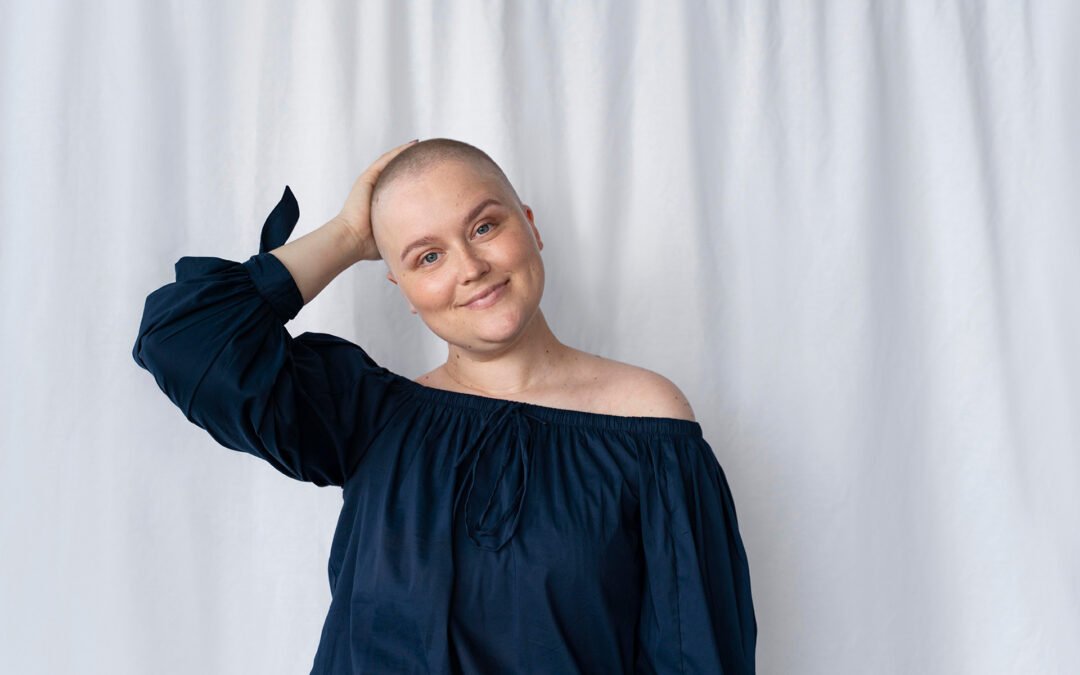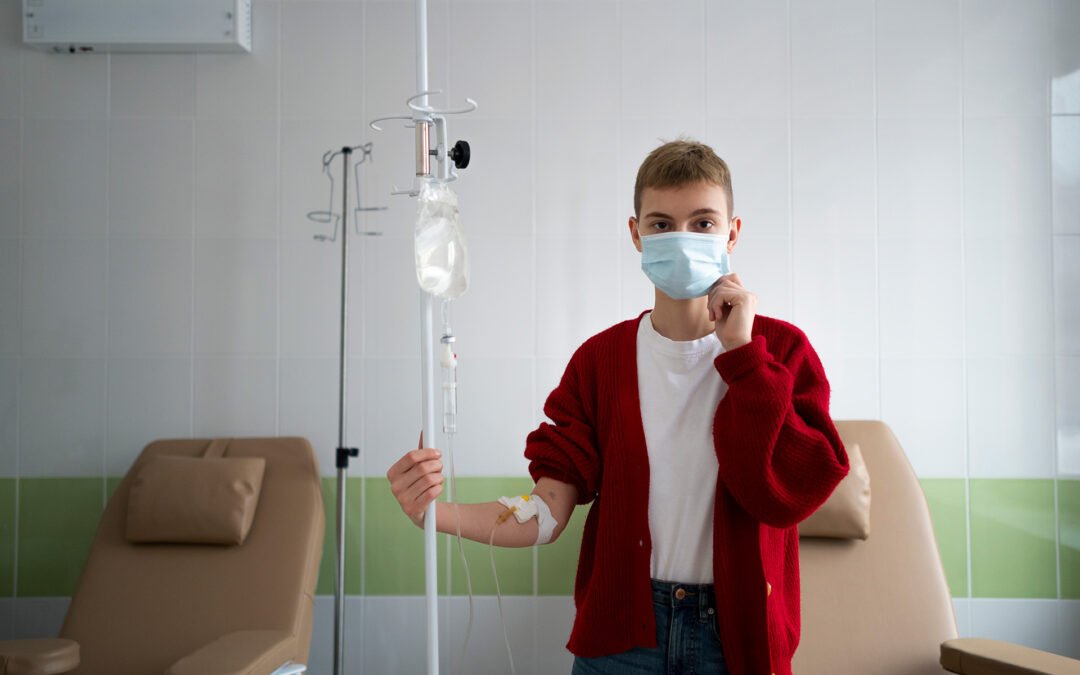No Results Found
The page you requested could not be found. Try refining your search, or use the navigation above to locate the post.

Prostate cancer is a type of cancer that develops in the prostate gland, a small gland present in the male reproductive system. Prostate cancer is one of the most common types of cancer in men, particularly in older men.
The pancreas plays a vital role in digestion and hormone regulation. The pancreas is located behind the lower abdomen. It produces enzymes that help digest food and hormones that help manage blood sugar.Pancreatic cancer is a type of cancer that begins as a growth of cells in the pancreas. Pancreatic cancer often progresses rapidly and is challenging to detect in its early stages, leading to a poorer prognosis compared to some other cancers.
What is myeloma?
Myeloma, also known as multiple myeloma, is a cancer that originates in plasma cells, a type of white blood cell found in the bone marrow. These abnormal plasma cells multiply uncontrollably, crowding out healthy blood cells and impairing the bone marrow’s ability to produce normal blood cells. Myeloma can lead to bone damage, weakened immune system, anemia, and kidney problems.
Lung cancer is typically associated with smoking and can cause symptoms like persistent cough, chest pain, and shortness of breath. There are two types: non-small cell lung cancer (NSCLC) and small cell lung cancer (SCLC). Diagnosis involves imaging tests and biopsies, and treatment options include surgery, chemotherapy, radiation therapy, targeted therapy, and immunotherapy. Preventive measures include quitting smoking and avoiding exposure to carcinogens.
Lymphoma is a type of blood cancer that affects the immune system. The lymphatic system includes the lymph nodes (small, bean-shaped structures that produce and store infection-fighting cells), the spleen, thymus, and bone marrow. Lymphoma primarily affects lymphocytes, a type of white blood cell that helps the body fight infections.
Non-Hodgkin’s lymphoma is a type of cancer that starts in your lymph system, which is part of the body’s immune system that fights germs. It involves the abnormal growth of lymphocytes, a type of white blood cell. NHL is characterized by the presence of cancerous lymphocytes in lymph nodes, bone marrow, and other organs. (B.Symptoms) may include swollen lymph nodes, fever, weight loss, fatigue, and night sweats. . Prognosis depends on factors such as NHL subtype, stage, and response to treatment.
Hodgkin lymphoma (HL) is a type of cancer that originates in the lymphatic system, which is part of the body’s immune system. It’s characterized by the presence of abnormal cells called Reed-Sternberg cells in the lymph nodes. HL typically starts in a single lymph node or group of lymph nodes before spreading to other parts of the body. Symptoms may include swollen lymph nodes, fever, weight loss, night sweats, and itching. Treatment often involves chemotherapy, radiation therapy, targeted therapy, and immunotherapy. Prognosis depends on factors such as stage, subtype, and response to treatment.
Squamous cell carcinoma (SCC) is a common type of skin cancer arising from squamous epithelium. It’s typically caused by sun exposure and appears as red nodules, scaly patches, or persistent sores on sun-exposed areas. Diagnosis involves a skin biopsy, and treatment includes surgical removal, Mohs surgery, cryotherapy, radiation therapy, or topical medications. Prognosis is generally good if detected and treated early but may worsen if left untreated or if it spreads. Preventive measures are sun protection and regular skin examinations.
Human papillomavirus (HPV) is a group of viruses transmitted through skin-to-skin contact, including sexual contact. Some types cause genital warts, while others can lead to various cancers. Prevention includes vaccination, safe sex practices, and regular screening. Treatment options depend on symptoms and may include topical medications, surgical removal, or cancer treatments like surgery, chemotherapy, or radiation therapy. WHO has set a target of 2040 to eradicate cervical cancer by promoting vaccination in teen girls between 9-15 years.
Cholangiocarcinoma is a rare but aggressive cancer that originates in the bile ducts, which are the tubes that carry bile from the liver to the small intestine. It’s often diagnosed at an advanced stage, making treatment challenging. Symptoms can include jaundice, abdominal pain, weight loss, and itching. Treatment options include surgery, chemotherapy, radiation therapy, and targeted therapy. Prognosis depends on factors such as the cancer’s stage, location, and response to treatment. Early detection is crucial for better outcomes, but cholangiocarcinoma is often diagnosed late.
Melanoma is a type of skin cancer that originates in melanocytes, the cells that produce pigment in the skin. It’s often associated with exposure to ultraviolet (UV) radiation from the sun or tanning beds. Melanoma can also occur in other parts of the body, such as the eyes and mucous membranes. It’s characterized by the development of abnormal moles or lesions that may change in size, shape, or color. Treatment options include surgical removal, chemotherapy, radiation therapy, targeted therapy, and immunotherapy. Preventive measures are sun protection and regular skin examinations.
Leukemia is a type of cancer that originates in the bone marrow, where blood cells are produced. It results in the abnormal production of white blood cells, which affects the body’s ability to fight infections. Leukemia can be acute or chronic and is classified based on the type of white blood cell affected (lymphocytes or myeloid cells). Symptoms may include fatigue, fever, easy bruising or bleeding, and frequent infections. Treatments are mainly chemotherapy,assisted by radiation therapy, targeted therapy, immunotherapy, and stem cell transplant. Prognosis varies depending on factors such as the type of leukemia, stage, and response to treatment.
Glioblastoma is an aggressive type of brain cancer that originates in the brain’s supportive tissue glial cells. It’s characterized by fast-growing tumors that infiltrate nearby brain tissue, making complete surgical removal difficult in few to many cases. Symptoms vary depending on tumor location but may include headaches, seizures, changes in mood or cognition, and neurological deficits. Treatment involves surgery, followed by radiation therapy and chemotherapy , glioblastoma has a poor prognosis, with a median survival of about 12 to 15 months. Ongoing research aims to develop more effective treatments for this challenging disease.Nerve treatment techniques like Tumor treating fields,novel therapeutic,particle radiation therapy improves response rate and survival.
Esophageal cancer is a type of cancer that develops in the food pipe, the tube that connects the throat to the stomach. It’s a relatively uncommon cancer in comparison to other types, but it can be quite aggressive. Symptoms of esophageal cancer may include difficulty swallowing (dysphagia), unintentional weight loss, chest pain or discomfort, and persistent indigestion or heartburn. Unfortunately, esophageal cancer is often diagnosed at an advanced stage when symptoms become noticeable, which can make it more difficult to treat.
Stomach cancer,known as gastric cancer,is a type of cancer that begins in the inner stomach lining.it often develops slowly over many years and is frequently diagnosed at an advanced stage to subtle early symptoms.Treatment options have evolved with newer forms of chemotherapy and better surgical techniques.
Description of ovarian cancer: ovarian cancer starts from different cells in the ovary.In young / adolescence it starts from germ cells or the stroma cells.In adults or older women,it starts in the epithelial or the surface cells.Treatment options include surgery and chemotherapy.
The stage indicates the size of the tumor and whether the cancer cells have spread to
other parts of the body. Ovarian cancer has four stages:stage I – Initial level. Cancer cells are found in one or both ovaries.
Stage II – Cancer is found in the pelvis.
Stage III – Cancer cells have spread to the abdomen.
Level IV – The most advanced level. Cancer has spread beyond the stomach to other parts of the body, such as the lungs.
Breast cancer is a prevalent form of cancer that originates in the breast tissue. While it primarily affects women, men can also develop this condition, albeit at a significantly lower rate.
It’s important to note that these symptoms can also be caused by conditions other than breast cancer. However, if you notice any persistent changes in your breasts or experience any of these symptoms, it’s essential to consult a healthcare professional for further evaluation. Early detection can significantly improve treatment outcomes for breast cancer.
A mammogram is an X-ray imaging technique used to screen for and diagnose breast cancer. It involves compressing the breast between two plates to take clear X-ray images of the breast tissue.
Cervical cancer is a type of cancer that occurs in the cells of the cervix, the lower part of the uterus that connects to the vagina. It’s primarily caused by persistent infection with high-risk types of human papillomavirus (HPV).Cervical cancer develops in a woman’s cervix (the entrance to the uterus from the vagina). Almost all the cervical cancer cases (99%) are linked to infection with high-risk human papillomaviruses (HPV), an extremely common virus transmitted through sexual contact.
Oral cancer refers to cancer that develops in any part of the oral cavity, including the lips, tongue, cheeks, floor of the mouth, hard and soft palate, sinuses, and throat (pharynx). Here are key points about oral cancer:
Bladder cancer is a type of cancer that begins in the cells of the bladder, which is the organ in the pelvis that stores urine. It typically starts in the urothelial cells that line the inside of the bladder. However, bladder cancer can also develop in other types of cells in the bladder, such as squamous cells or glandular cells, though these are less common.
Here are some key points about bladder cancer:
Thyroid cancer is a type of cancer that originates in the cells of the thyroid gland, which is located at the base of the neck and produces hormones that regulate metabolism. This cancer typically begins in the cells of the thyroid gland and can spread to other parts of the body if not treated.
Some key points about thyroid cancer:
Endometrial cancer is a type of cancer that starts in the lining of the uterus (the endometrium). It is the most common type of uterine cancer and typically affects women after menopause, although it can occur at any age. Endometrial cancer often causes abnormal vaginal bleeding, pelvic pain, or a mass or lump in the pelvic area. Treatment usually involves surgery to remove the uterus and sometimes other affected tissues, along with radiation therapy, chemotherapy, or hormone therapy, depending on the stage and characteristics of the cancer. Early detection and treatment can improve the prognosis for endometrial cancer.
Kidney cancer, also known as renal cancer, is a type of cancer that originates in the kidneys, the bean-shaped organs located near the middle of the back, just below the rib cage. Kidney cancer most often affects adults and is usually detected in people aged 50 to 70 years old.
There are several types of kidney cancer, with renal cell carcinoma being the most common. Other less common types include transitional cell carcinoma, Wilms tumor (typically found in children), and renal sarcoma.
The exact cause of kidney cancer is often unknown, but risk factors may include smoking, obesity, high blood pressure, family history of kidney cancer, and certain genetic conditions.
Symptoms of kidney cancer may include blood in the urine, persistent back pain just below the ribs, unintentional weight loss, fatigue, loss of appetite, and fever that persists for an extended period.
Liver cancer, also known as hepatic cancer, is a type of cancer that originates in the liver, an organ located in the upper right area of the abdomen. There are several types of liver cancer, with hepatocellular carcinoma (HCC) being the most common. Other types include intrahepatic cholangiocarcinoma and hepatoblastoma (more common in children).
Risk factors for liver cancer include chronic infection with hepatitis B or C viruses, cirrhosis (scarring of the liver), excessive alcohol consumption, obesity, diabetes, exposure to aflatoxins (toxins produced by mold), and certain genetic conditions.
Testicular cancer is a type of cancer that begins in the testicles, which are part of the male reproductive system. Testicular cancer usually begins in the germ cells, which are responsible for producing sperm. It is one of the less common types of cancer but is most frequently diagnosed in younger men, typically between the ages of 15 and 40.
There are two types of testicular cancer:
Risk factors for testicular cancer include having a family history of the disease, having an undescended testicle (cryptorchidism), having had testicular cancer in the other testicle previously, and certain genetic conditions.
Symptoms of testicular cancer may include a lump or swelling in one of the testicles, pain or discomfort in the testicle or scrotum, a feeling of heaviness in the scrotum, and enlargement or tenderness of the breasts.
A CNS (Central Nervous System) tumor is a type of abnormal growth or mass that develops within the brain or spinal cord. These tumors can arise from various types of cells within the CNS, including neurons, glial cells (such as astrocytes, oligodendrocytes, and ependymal cells), and other supporting tissues.
There are two main categories of CNS tumors:
Symptoms of CNS tumors can vary depending on the size, location, and type of tumor, but common symptoms may include headaches, seizures, changes in vision or hearing, weakness or numbness in the limbs, difficulty with balance or coordination, cognitive or behavioral changes, and nausea or vomiting.
Pediatric cancers refer to a group of cancers that affect children and adolescents. Although relatively rare, pediatric cancers differ significantly from adult cancers in terms of their types, development, and treatment.
A colonoscopy is a medical procedure used to examine the inside of the large intestine (colon) and rectum. It’s a crucial tool for diagnosing and treating various conditions affecting the colon, including colorectal cancer, polyps, inflammatory bowel disease (such as Crohn’s disease and ulcerative colitis), and other gastrointestinal problems.
During a colonoscopy, a long, flexible tube called a colonoscope is inserted into the rectum and guided through the entire length of the colon. The colonoscope has a small camera and light attached to its tip, allowing the doctor (usually a gastroenterologist) to visualize the inner lining of the colon on a monitor in real-time.
Immunotherapy is a cancer treatment that boosts the body’s immune system to fight cancer cells. It includes drugs like checkpoint inhibitors, monoclonal antibodies, and CAR T-cell therapy. Immunotherapy is used across various cancers and stages, with some patients experiencing long-term remission. Side effects, called immune-related adverse events, can occur but are manageable. Ongoing research focuses on improving effectiveness and exploring combination therapies.
The page you requested could not be found. Try refining your search, or use the navigation above to locate the post.

Chemotherapy drugs are designed to target and kill rapidly dividing cells, such as cancer cells. Unfortunately, they can also affect other rapidly dividing cells in the body, including those in the hair follicles. This interference with the hair follicles’ growth cycle is what leads to chemotherapy-induced hair loss, also known as alopecia.
The extent of hair loss can vary depending on several factors, including the type and dosage of chemotherapy drugs used, the duration of treatment, and individual differences in hair growth patterns and sensitivity to the drugs.
Hair loss due to chemotherapy is usually temporary. In most cases, hair begins to grow back once chemotherapy treatment is completed. However, it may take several weeks to months for hair regrowth to become noticeable, and the texture or color of the regrown hair may be different from before. In some cases, hair may not fully return to its pretreatment state.
The timeline for chemotherapy-induced hair loss can vary from person to person and depends on several factors, including the specific chemotherapy drugs used, the dosage and frequency of treatment, and individual differences in hair growth patterns and sensitivity to the drugs. Generally, hair loss typically begins within a few weeks of starting chemotherapy.
Here’s a rough timeline:
It’s important to note that not all chemotherapy drugs cause hair loss, and even among drugs that commonly lead to hair loss, individual responses can vary. Some people may experience partial hair loss, while others may lose most or all of their hair.
Additionally, hair loss due to chemotherapy is usually temporary. After completing chemotherapy treatment, hair typically begins to grow back. The timeline for hair regrowth can also vary, but in general, new hair growth may start within a few weeks to months after the end of treatment. However, it may take several months for hair to fully regrow, and the texture or color of the regrown hair may be different from before treatment.
Hair regrowth after chemotherapy can vary from person to person and depends on several factors, including the specific chemotherapy drugs used, the dosage and duration of treatment, and individual differences in hair growth patterns and metabolism.
In general, hair regrowth typically begins within a few weeks to months after completing chemotherapy treatment. Here’s a rough timeline:
It’s important to note that the timeline for hair regrowth can vary widely among individuals, and patience is often required. Additionally, not all individuals experience complete regrowth, and in some cases, hair may not return to its pretreatment state.
If hair regrowth seems delayed or if there are concerns about the process, it’s advisable to consult with a healthcare provider or oncologist for guidance and reassurance.
The page you requested could not be found. Try refining your search, or use the navigation above to locate the post.

Nausea and vomiting are common side effects of cancer treatment, including chemotherapy, radiation therapy, and certain medications. Managing these symptoms effectively can improve your comfort and quality of life during treatment. Here are some tips for managing nausea and vomiting:
If you experience severe or persistent nausea and vomiting that interfere with your ability to eat, drink, or perform daily activities, notify your healthcare provider. They can adjust your treatment plan or prescribe additional medications to help manage these symptoms effectively. Remember that managing nausea and vomiting is an important part of cancer care, and your healthcare team is there to support you throughout your treatment journey.
Nausea and vomiting can occur before, during, or after treatment.
Types of nausea and vomiting include:
● Acute: Nausea and vomiting occurring within 24 hours of treatment initiation.
● Delayed: Nausea and vomiting that occurs more than 24 hours after chemotherapy. It is also known as delayed nausea and vomiting.
Contraindications: Nausea and vomiting before starting chemotherapy treatment. If a patient has nausea and vomiting after a previous chemotherapy session, he may experience nausea and vomiting before the next treatment. It usually starts after the third or fourth treatment. The smells, sights, and sounds of the treatment room may remind the patient of earlier times and trigger nausea and vomiting before the chemotherapy session begins
Breakthrough: Nausea and vomiting occur within 5 days of receiving anti-nausea therapy. Also different medications or dosages are needed to prevent nausea and vomiting
Refractory: Nausea and vomiting unresponsive to medications.
Chronic: Nausea and vomiting persist for some time after the end of treatment.
The page you requested could not be found. Try refining your search, or use the navigation above to locate the post.

Yes, chemotherapy can have several side effects, which can vary depending on the type and dosage of chemotherapy drugs, as well as individual factors such as overall health and tolerance to treatment. Some common side effects of chemotherapy include:
It’s important to note that not everyone will experience all of these side effects, and some people may have different or additional side effects. Additionally, advancements in chemotherapy drugs and supportive care have helped in managing and reducing the severity of these side effects. Patients undergoing chemotherapy should discuss potential side effects with their healthcare team and seek support to manage any symptoms that arise during treatment.
The page you requested could not be found. Try refining your search, or use the navigation above to locate the post.

Here are the factors for successful treatment for cancer recovery:
Type of Cancer and Stage: Tailored treatment plans based on the type and stage of cancer are crucial for successful treatment.
Personalized Treatment Plan: Customized treatment plans tailored to the types of cancers and the timing of treatments are essential.
Healthy Nutrition and Body Codition: Providing nutritious food and maintaining a healthy body condition can contribute to successful treatment and a healthy recovery.
Strength in Coping with Treatment Fatigue and Resilience: Coping with treatment fatigue and resilience is essential for successful treatment outcomes. This involves maintaining mental resilience and finding strength in coping mechanisms.
Support from Medical and Advisory Teams: Collaborative efforts among medical professionals, caregivers, and research institutions are essential to surpassing cancer recovery goals.
Emotional Well-being and Mental Health: Emotional well-being and mental health play a significant role in enhancing the efficacy of treatment.
Clear Communication and Consultation: Clear communication and consultations between patients and medical professionals are vital to ensure the success of treatment plans and address any concerns or adjustments needed during the recovery journey.
Cancer cure depends on various factors including the type of cancer, its stage, and how it responds to treatment. Advanced age and co-existent comorbid illnesses like diabetes, heart/ kidney/ liver problems may limit treatment outcomes. While some cancers can be cured, some may be managed as a chronic condition. Treatment options include surgery, radiation, chemotherapy, targeted therapy, immunotherapy, and hormone therapy. Early detection and personalized treatment plans can improve outcomes.
The page you requested could not be found. Try refining your search, or use the navigation above to locate the post.